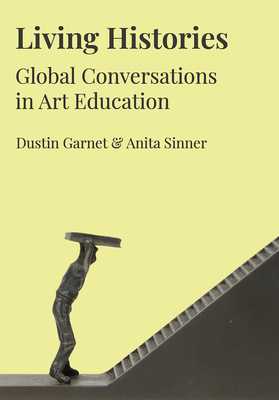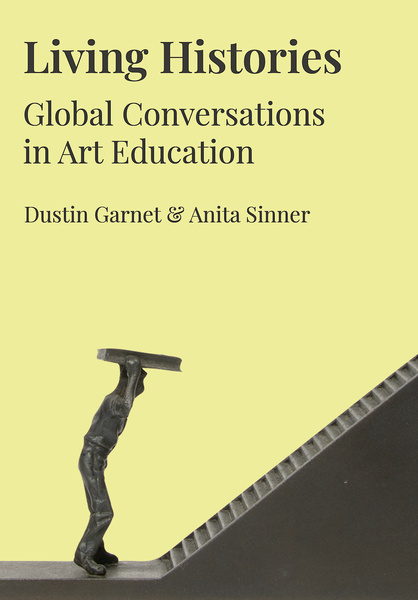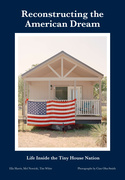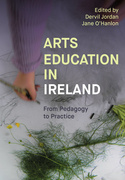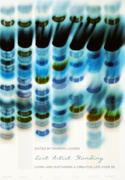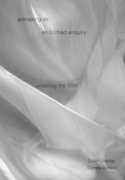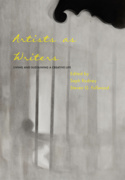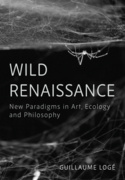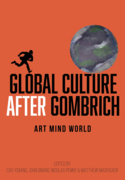Living Histories (Book)
Global Conversations in Art Education
This new edited collection explores histories of art education in international contexts. Offers a series of thoughtful and invigorating conversations with international scholars who evoke our conceptualizations of the histories of art education in pursuit of more equitable, diverse and inclusive understandings of the field. 35 col. illus.

Edition
Living Histories is a collection of new scholarship that explores histories of art education through a series of international contexts. The first truly international text highlighting histories of art education, with contributions from over 30 scholars based in 18 countries.
Art education holds an important role in promoting historical awareness of the multiple relations that connect pedagogic inquiry with culture, heritage, place and identity, locally and globally. To keep pace with the movements of art and society, Garnet and Sinner consider that art education requires more inclusive and holistic versions of history from transnational perspectives that break down barriers and cross borders in the pursuit of more informed and diverse understandings of the field. The broad focus of this edited collection is to provide both new perspectives of art education from around the world, and to introduce transnationalism into the field as a way to conceptualize the entanglements of historical research in our globalized age. Transnational histories of art education focus on the linkages and flows that shift focus away from the nation-state to other transnational actors such as individuals, communities, institutions and/or organizations.
Contributions from scholars and educators based and working in Australia, Austria, Brazil, Canada, Colombia, Croatia, Czech Republic, Finland, India, Iran, Japan, Malta, South Africa, Spain, Trinidad and Tobago, UK, USA and Zimbabwe.
Includes chapters that adapt an approach of ‘artwork histories’ to explore the legacies of art education as an anticipatory mode of historical thinking and practice across the visual arts and sites of art education. The book offers an opportunity for authentic engagement and intellectual risk, which includes the rejection of ‘correct’ interpretations of historical problems. As active agents, art education historians are not passive collectors of the past, but engaged in new ways of doing history predicated on cultivating stories that move beyond representation to attend to aesthetic dimensions that bridge historiography, material culture, oral history, art history and teacher education. Living Histories provides an interpretation of historical thinking and consciousness through the interrelations of time and space to provoke critical and creative practices in education.
This is the latest book in the Artwork Scholarship series, which aims to invite debate on, and provide an essential resource for transnational scholars engaged in, creative research involving visual, literary and performative arts.
With contributors from 18 countries, this book will have a substantial international readership among art educators and those interested in the history of art education, primarily in universities and colleges. It will also be particularly useful for graduate students.
It will also appeal to scholars in arts education more broadly - music education, dance education, theatre education scholars, cultural and art historians, art theorists, international educators, and curators.
Dustin Garnet is an assistant professor of art education at California State Los Angeles, USA. He presents and publishes nationally and internationally on various topics including art education history, curriculum studies, archives, oral histories, qualitative methodologies and social justice-related issues.
Anita Sinner is a Professor of Art Education at The University of British Columbia. Her interests include artwork scholarship, international art education, stories as research, and community art education.
Illustrations
Tables
Introduction
PART 1: EXPLORING THE POLITICS OF SPACE AND PLACE
1. Artefacts of Resistance Existence: A Black Feminist Material Culture – Joni Boyd Acuff & Sharbreon Plummer
2. Past Performance Is No Guarantee of Future Results: Art, Education and the Fictionalization of Identity – Raphael Vella
3. Resisting Globalization through Popular Culture in Dominican Art Education – Felix Rodriguez
4. An Intruded Poetics in Education: The A/r/tographic School on the Outskirts of Brasília – Leísa Sasso
5. ‘Doing’ History: Developing an Arts Programme to Engage Female Aboriginal and Torres Strait Islander Australian Students – Julia Morris
6. Masquerade as a Future Direction for Queer Art Education – Nick Stanley
Interlude I: Once Vienna was the Mecca of Visual Arts Education for Children: The (Re)Discovery of Franz Čížek – Rolf Laven
PART 2: IN RELATION TO COMMUNITIES OF PRACTICE
7. Early Childhood and Preschool Visual Arts Education in Croatia – Antonija Balić Šimrak & Marijana Županić Benić
8. Constants and Variables: Art Education in the Czech Republic after 2000 – Hana Stehlíková Babyrádová
9. Imagine, Create and Make It Real: Art Processes at Colegio Campestre San Diego, Bogotá, Colombia – María Victoria Mejía & Susana Vargas-Mejía
10. Art and Design in Higher Education: Narratives and Trajectories in University Education in Zimbabwe – Attwell Mamvuto, Mary Dlodlo, Victor Dewa & Dairai Darlington Dziwa
11. Wandering with, in and through Iranian Art Education – Elly Yazdanpanah & Siavash Farkhak
12. The Biography of a Street Poster: The Art and Pedagogy of Robbie Conal – G. James (Jim) Daichendt
Interlude II: Tracks on Snow Memory, Poetry, Histories – Robert Christopher Nellis
PART 3: SHARING POSSIBILITIES AND PROPOSITIONS
13. Misinformation and Envisioning Art Education History Research: A Personal Account and Suggestions for Change – Enid Zimmerman
14. ‘Let It Be With Us as It Was With Athens’: Art Education, Greek Antiquity and the Construction of a Western Sense of the Past in Finland and the United States – Juuso Tervo
15. Transnational Progressive Vision of Educating Children Through Art: Revisiting Dewey’s 1919 Sojourn in Japan for Global Citizenship Education – Kazuyo Nakamura, Wataru Inoue, Gina Alicea, Allison Beaulieu, Shunroku Morinaga & Shinichi Matsuzaki
16. History and Story Space: Narrating Patricia Ismond’s Role in the Origins of the UWI Department of Creative and Festival Arts – Marsha Pearce
17. Art for ‘Sense Generation’: Historical Traumas in Armenia and Korea, and Discourses of Art Creation, Curation and Education – Hyunji Kwon
18. Ananda Kentish Coomaraswamy: Crossing the Boundaries of Art and Life – Pallawi Sinha
Interlude III: 76 People Who Making Art Walked Together – María-Isabel Moreno-Montoro & María Martínez-Morales
Notes on Contributors
Index

